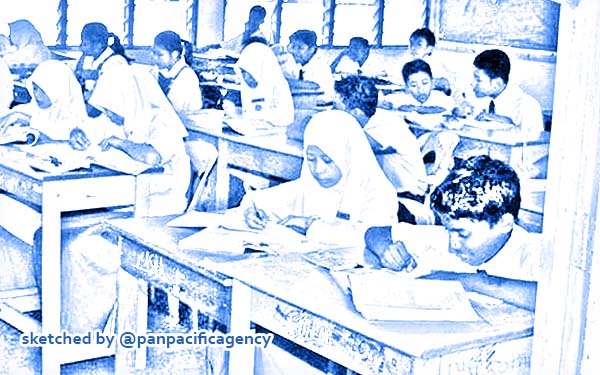Indonesia’s illiteracy rate falls to 1.78 per cent in 2019

The attitude of students towards the learning of English has also contributed to the problem, says academic Teo Kok Seong. (Bernama pic). Sketched by the Pan Pacific Agency.
JAKARTA, Sep 5, 2020, ANTARA. Indonesia’s illiteracy rate fell to 1.78 percent of the total population in 2019 from 1.93 percent the year before, an Education and Culture Ministry official said, ANTARA reported.
“The illiteracy rate stood at 1.93 percent, or 3.29 million people, in 2018 and fell to 1.78 percent, or 3.076 million, in 2019,” director general of Early Childhood Education, Elementary Education and Secondary Education at the Education and Culture Ministry, Jumeri STP MSi, said here on Friday.
The illiteracy rate has continued to fall thanks to the implementation of various innovative strategies to fulfill people’s learning needs, he remarked.
Non-formal education is as important as formal education, he said.
“Illiteracy must be eradicated since it hinders citizens’ access to information, health, and jobs,” he added.
Indonesia has been considered successful in eradicating illiteracy, as is evident by its being awarded the King Sejong Literacy Prize by the United Nations Educational, Scientific and Cultural Organization (UNESCO) in 2012, he pointed out.
Since the end of 2018, Indonesia has been chosen on the Steering Committee for Global Alliance for Literacy (GAL UNESCO), in recognition of its success in rooting out illiteracy, he added.
GAL is an alliance of 29 countries, comprising 20 countries with a literacy rate of below 50 percent (including Afghanistan and several African countries) and E-9 Countries, or nine most populated nations in the world with a literacy rate of above 70 percent (including India and Indonesia).
According to the national welfare statistics issued by the Central Statistics Agency (BPS) in 2019, the country’s literacy rate for people aged between 15 and 59 has reached 98.22 percent.
Several efforts have been made to curb the illiteracy rate in the country through updating illiteracy data, eradication strategy, partnership networking, and literacy education innovations.